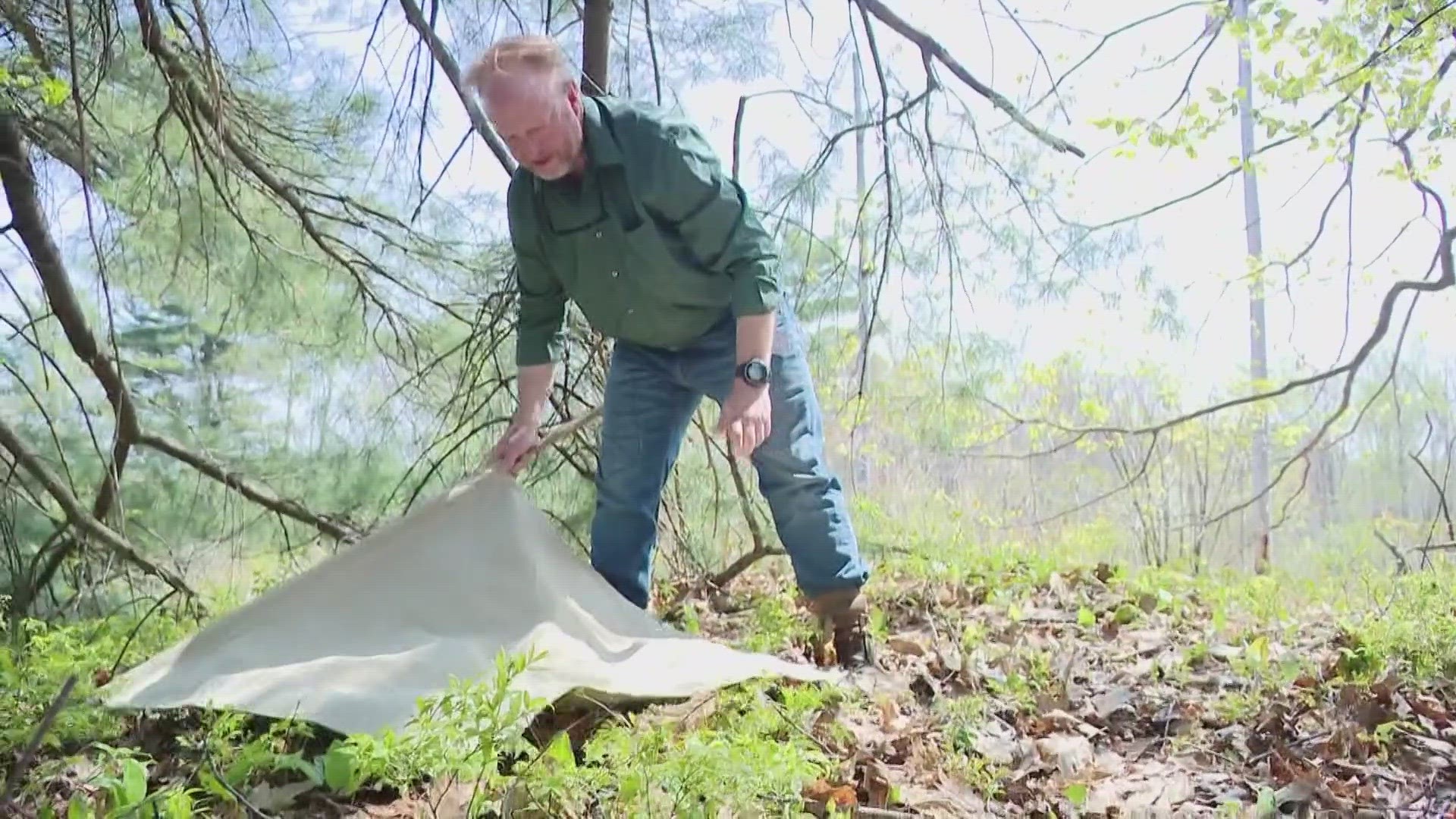MAINE, Maine — It's Tick Week at NEWS CENTER Maine. Every day we will bring you all the latest information on ticks and the diseases they carry.
So far this year, the Maine Center for Disease Control and Prevention has counted 374 cases of Lyme following a record of more than 2,600 cases last year. Research shows deer ticks are expanding into new areas of Maine, and they're carrying a greater number of disease-causing pathogens as they move.
Experts are saying "tick season" is pretty much a year-round problem now because of climate change, and warming winters could lead to more favorable habitats for new species, such as the Lone Star tick, which is linked to red meat allergies, according to researchers.
Chuck Lubelczyk is always on the move looking for ticks, dragging a long corduroy cloth over leaf litter and brush, pulling up ticks as he goes.
The vector ecologist at the MaineHealth Institute for Research leads teams in tracking ticks in every county in Maine. Researchers are finding established populations in western Maine, near the Canadian border.
"Jackman has ticks where they did not have them five years ago. We are also finding on the opposite side of the state that ticks are being found in Houlton, Presque Isle, and Fort Kent, [where] ticks are being found in very small numbers," Lubelczyk explained.
With milder winters, ticks can become active anytime temperatures go above 32 degrees. A cooler than normal March eased activity somewhat, but Lubelczyk said ticks are now out in full force. The Lone Star tick is also on their radar. A bite could cause a lifetime allergic reaction to red meat called Alpha-gal syndrome, which causes food allergies to red meat such as beef, pork, and other mammal products.
Researchers are also looking for the Asian long-horned tick, an invasive tick that can impact the health of livestock.
"We haven't found any evidence of those ticks arriving yet, but you never say never. But I think it's inevitable at some point," Lubelczyk said.
At the University of Maine Cooperative Extension Tick Lab in Orono, manager Griffin Dill and other researchers have already received more than 400 tick samples, this year. For a $20 fee, ticks are tested for the pathogens that cause Lyme disease and other co-infections, including anaplasmosis and babesiosis. The Brown dog tick is also tested for the pathogens that cause Rocky Mountain spotted fever, but no cases have been detected in Maine.
In April, UMaine researchers started testing for the Heartland virus, which is spread by the Lone Star tick, and the Powassan virus, which is transmitted by deer and woodchuck ticks. In about 10 percent of cases, the outcome can be fatal. The virus is rare and can cause swelling of the brain, and anyone can be at risk. There have been 15 cases identified in Maine since 2015, and three of those cases have been fatal -- the latest being 58-year-old Robert Weymouth of Topsham, who died May 14.
"We are just not aware of it because we don't have easy diagnostic tools for it, and unlike other tick-borne diseases we talked about, we don't have treatment for Powassen virus," Dr. Rob Smith, director of the MHIR Vector-Borne Disease Lab, said.
Smith explained it's critical that people learn what diseases are transmitted by ticks and the signs and symptoms.
"If you get an unexplained fever, with flu-like symptoms during the tick season, which is pretty much all year now, that is a consideration, especially if you have been in an area where you may have been exposed to ticks," Smith said.
The University of Maine Tick Lab will utilize new sources of federal funding to soon send out teams of graduate students and other experts throughout the states to locate some of these new tick species.
If you are heading outdoors experts say to wear protective clothing, use an EPA-registered repellent and do frequent tick checks.
More NEWS CENTER Maine stories

